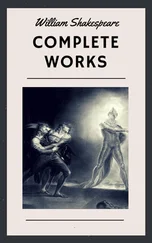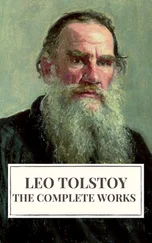We find that in this oldest of questions a few points had been already solved. The first is that there was a time when there was “neither aught nor naught”, when this world did not exist; our mother earth with the seas and oceans, the rivers, and mountains, cities and villages human races, animals, plants, birds, and planets and luminaries, all this infinite variety of creation, had no existence. Are we sure of that? We will try to trace how this conclusion is arrived at. What does man see around him? Take a little plant. He puts a seed in the ground, and later, he finds a plant peep out, lift itself slowly above the ground, and grow and grow, till it becomes a gigantic tree. Then it dies, leaving only the seed. It completes the circle — it comes out of the seed, becomes the tree, and ends in the seed again. Look at a bird, how from the egg it springs, lives its life, and then dies, leaving other eggs, seeds of future birds. So with the animals, so with man. Everything in nature begins, as it were, from certain seeds, certain rudiments, certain fine forms, and becomes grosser and grosser, and develops, going on that way for a certain time, and then again goes back to that fine form, and subsides. The raindrop in which the beautiful sunbeam is playing was drawn in the form of vapour from the ocean, went far away into the air, and reached a region where it changed into water, and dropped down in its present form — to be converted into vapour again. So with everything in nature by which we are surrounded. We know that the huge mountains are being worked upon by glaciers and rivers, which are slowly but surely pounding them and pulverising them into sand, that drifts away into the ocean where it settles down on its bed, layer after layer, becoming hard as rocks, once more to be heaped up into mountains of a future generation. Again they will be pounded and pulverised, and thus the course goes on. From sand rise these mountains; unto sand they go.
If it be true that nature is uniform throughout, if it be true, and so far no human experience has contradicted it, that the same method under which a small grain of sand is created, works in creating the gigantic suns and stars and all this universe, if it be true that the whole of this universe is built on exactly the same plan as the atom, if it be true that the same law prevails throughout the universe, then, as it has been said in the Vedas, “Knowing one lump of clay we know the nature of all the clay that is in the universe.” Take up a little plant and study its life, and we know the universe as it is. If we know one grain of sand, we understand the secret of the whole universe. Applying this course of reasoning to phenomena, we find, in the first place, that everything is almost similar at the beginning and the end. The mountain comes from the sand, and goes back to the sand; the river comes out of vapour, and goes back to vapour; plant life comes from the seed, and goes back to the seed; human life comes out of human germs, and goes back to human germs. The universe with its stars and planets has come out of a nebulous state and must go back to it. What do we learn from this? That the manifested or the grosser state is the effect, and the finer state the cause. Thousands of years ago, it was demonstrated by Kapila, the great father of all philosophy, that destruction means going back to the cause. If this table here is destroyed, it will go back to its cause, to those fine forms and particles which, combined, made this form which we call a table. If a man dies, he will go back to the elements which gave him his body; if this earth dies, it will go back to the elements which gave it form. This is what is called destruction, going back to the cause. Therefore we learn that the effect is the same as the cause, not different. It is only in another form. This glass is an effect, and it had its cause, and this cause is present in this form. A certain amount of the material called glass plus the force in the hands of the manufacturer, are the causes, the instrumental and the material, which, combined, produced this form called a glass. The force which was in the hands of the manufacturer is present in the glass as the power of adhesion, without which the particles would fall apart; and the glass material is also present. The glass is only a manifestation of these fine causes in a new shape, and if it be broken to pieces, the force which was present in the form of adhesion will go back and join its own element, and the particles of glass will remain the same until they take new forms.
Thus we find that the effect is never different from the cause. It is only that this effect is a reproduction of the cause in a grosser form. Next, we learn that all these particular forms which we call plants, animals, or men are being repeated ad infinitum, rising and falling. The seed produces the tree. The tree produces the seed, which again comes up as another tree, and so on and on; there is no end to it. Water-drops roll down the mountains into the ocean, and rise again as vapour, go back to the mountains and again come down to the ocean. So, rising and falling, the cycle goes on. So with all lives, so with all existence that we can see, feel, hear, or imagine. Everything that is within the bounds of our knowledge is proceeding in the same way, like breathing in and breathing out in the human body. Everything in creation goes on in this form, one wave rising, another falling, rising again, falling again. Each wave has its hollow, each hollow has its wave. The same law must apply to the universe taken as a whole, because of its uniformity. This universe must be resolved into its causes; the sun, moon, stars, and earth, the body and mind, and everything in this universe must return to their finer causes, disappear, be destroyed as it were. But they will live in the causes as fine forms. Out of these fine forms they will emerge again as new earths, suns, moons, and stars.
There is one fact more to learn about this rising and falling. The seed comes out of the tree; it does not immediately become a tree, but has a period of inactivity, or rather, a period of very fine unmanifested action. The seed has to work for some time beneath the soil. It breaks into pieces, degenerates as it were, and regeneration comes out of that degeneration. In the beginning, the whole of this universe has to work likewise for a period in that minute form, unseen and unmanifested, which is called chaos, and; out of that comes a new projection. The whole period of one manifestation of this universe — its going down into the finer form, remaining there for some time, and coming out again — is, in Sanskrit, called a Kalpa or a Cycle. Next comes a very important question especially for modern; times. We see that the finer forms develop slowly and slowly, and gradually becomes grosser and grosser. We have seen that the cause is the same as the effect, and the effect is only the cause in another form. Therefore this whole universe cannot be produced out of nothing. Nothing comes without a cause, and the cause is the effect in another form.
Out of what has this universe been produced then? From a preceding fine universe. Out of what has men been produced? The preceding fine form. Out of what has the tree been produced? Out of the seed; the whole of the tree was there in the seed. It comes out and becomes manifest. So, the whole of this universe has been created out of this very universe existing in a minute form. It has been made manifest now. It will go back to that minute form, and again will be made manifest. Now we find that the fine forms slowly come out and become grosser and grosser until they reach their limit, and when they reach their limit they go back further and further, becoming finer and finer again. This coming out of the fine and becoming gross, simply changing the arrangements of its parts, as it were, is what in modern times called evolution. This is very true, perfectly true; we see it in our lives. No rational man can possibly quarrel with these evolutionists. But we have to learn one thing more. We have to go one step further, and what is that? That every evolution is preceded by an involution. The seed is the father of the tree, but another tree was itself the father of the seed. The seed is the fine form out of which the big tree comes, and another big tree was the form which is involved in that seed. The whole of this universe was present in the cosmic fine universe. The little cell, which becomes afterwards the man, was simply the involved man and becomes evolved as a man. If this is clear, we have no quarrel with the evolutionists, for we see that if they admit this step, instead of their destroying religion, they will be the greatest supporters of it.
Читать дальше












